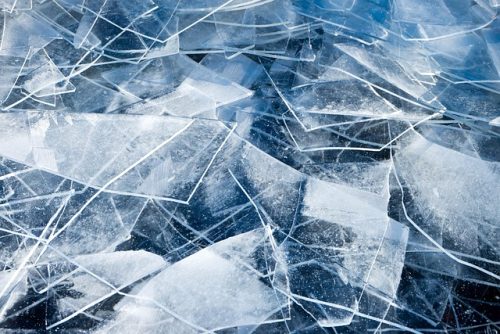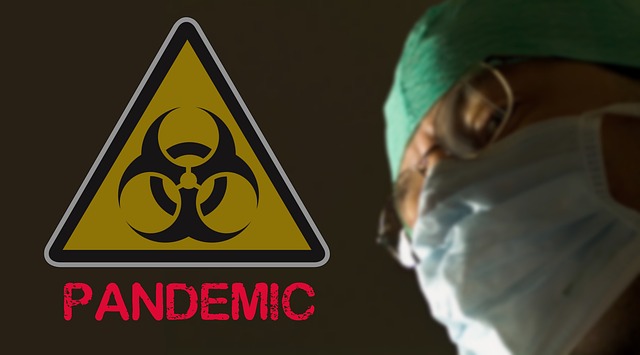Introduction: How is Climate Change linked to the Emergence and Spread of Disease?
As burning of fossil fuels and the emission of huge amounts of CO2 worsens the greenhouse effect; it is expected that the average global temperature will increase by 1-2 °C by 2100.
As a result, in the upcoming decades, there will be extreme weather events as well as an increase in the various diseases.
In recent history, we have seen the rise of new diseases like HIV/AIDS-1980, Hepatitis C-1990, Swine Flu-2009, MERS-2012, COVID-2019 to name a few. All these have some relation to changes in the environment. This reflects that Climate change will also increase disease occurrence.
Also read: Covid-19 and Climate Change – Exposing Environmental Injustice
ROLE OF ENVIRONMENTAL CHANGES IN POTENTIAL DISEASE EMERGENCE:
- GLOBAL WARMING & POLAR MELTING: We know that the observed rise in average global temperature leads to melting of the cryosphere. The rise in temperature is felt more towards the poles and much less near the equator. Melting ice will not only lead to more floods, but will also reactivate frozen, dormant microorganisms- viruses, bacteria that could perhaps carry life threatening diseases.

- HABITAT CONDITINS: a complex mixture of various environmental conditions (e.g. temperature and humidity) determines the suitable habitat for every vector– (microorganism capable of transmitting disease). due to habitat disruption, These vectors or organisms may migrate or infiltrate human settlements where they may contaminate or breed on surface waters, directly bite or infect people. Organisms, especially tropical disease agents, are expected to emerge and re-emerge in several countries including Europe and North America.
- DISEASE TRANSMISSION: Climate change directly effects disease transmission because it shifts the vector’s geographic range and increases reproductive and biting rates. It also shortens the pathogen incubation period-(the time taken for the symptoms to develop from the time of the exposure). The increase in sea temperature and level can lead to higher rate of water-borne diseases and related illnesses, such as cholera and shellfish poisoning. Human migration due to disease, and damage to health infrastructures from the predicted increase of extreme weather events could indirectly contribute to disease transmission as well.
Also read: Environmental Impacts Of Disposable Covid-19 Face Masks and Harmful Effects of Excessive Use of Hand Sanitisers – Covid-19
HOW DOES CLIMATE CHANGE RESULT IN THE EMERGENCE OF NEW DISEASE?
One of the most serious effect of global warming is the melting of ice layer existing since millennia. The ice sheets and ice cores not only provide us with information about ancient organisms, climatic patterns and history of earth. Melting Ice will uncover buried pathogens– disease causing organisms.
In 2012, Virola virus was detected in a 300 old frozen mummy in Siberia. In 2005, scientists from NASA revived bacteria frozen in Alaska for 32,000 years. Some other scientists also found 8-million-year-old bacteria from ice samples in Antarctica.
Thus, as the ice melts, the various viruses and spores are capable of becoming active again. In fact, it has been discovered that the spores and various viruses are capable of becoming dormant when conditions are not in favor of their survival; they are hidden under frozen soil and are being reactivated as the ice melts; these spores can be transported by floods or by insects (e.g: flies) where they may reach human communities.
In 1980, Small Pox was declared to be completely eliminated by the UN. Yet, scientists have since discovered the variola virus which is responsible for causing smallpox; dormant in frozen human bodies buried in the Siberian permafrost where a large epidemic of small pox occurred in 1890.
It is predicted that the future pandemic may arise from melting glaciers due to the number of pathogens frozen in it which will reactivate on melting.
You might also like: COVID-19 Crisis Impacting Environmental Sustainability
LINKANGE OF CLIMATE CHANGE AND THE RATE OF SPREAD OF INFECTIOUS DISEASES:
Climatic factors and its resulting effects influence the origin and spread of infectious diseases, in addition to multiple human, biological, and ecological factors.
It is estimated that 34% of all childhood illness and 36% of young children’s deaths worldwide are linked to environmental changes. Outbreaks of cholera, malaria, diarrhea, fungal diseases and dengue fever are all strongly influenced by climatic changes. The spread of mosquito-borne diseases like: malaria, dengue, and viral encephalitis, are among those diseases most sensitive to climate. Hanta Virus, Bird flu, cholera, Ebola, plague and tuberculosis are just a few of the diseases likely to spread and get worse as a result of climate change. Globally, temperature increases of 1-2ºC would increase the number of people at risk of malaria by around 3- 5%, i.e. several hundred million.
You might also wish to read a related article: Climate Change Impacts Human Health – Pandemics The Future?
CONCLUSION:
Alterations in the disease occurrence and transmission patterns are a likely consequence of climate change. We need to analyze the role of climate in the emergence of infectious diseases and that will need the physicians, climatologists, biologists, and social scientists working together. Increased disease surveillance, integrated modeling, and use of geographically based data collection systems will allow more anticipatory and mitigatory measures. Understanding the linkages between climatological and ecological change as causes of disease emergence and redistribution will greatly help us take the right direction to combat it.
Also Check Out:
Glacier Melting and Glacial Retreat- Causes, Effects and Solutions
Third Pole is Melting-Himalaya-Hindukush-Karakoram Glaciers
We hope you liked this post! Please comment below if you have any suggestions, comments or feedbacks! We at #envpk love hearing from readers! Thanks




